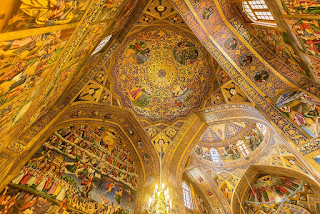Dayeakutyun
The ancient Armenian naxarars observed the curious practice of dayeakutyun, and recent events in Armenia give us a clue as to why…
Robert Bedrosian describes in the Encyclopedia Iranica:
DAYEAKUTʿIWN is a form of child rearing practiced in Armenia and other parts of the Caucasus. In modern Armenian dayeak means only “wet nurse,” but in its earliest attestations (4th-5th centuries) it referred to one entrusted with educating and nurturing a child for an extended period. At that time the young sons of Armenian lords (naxarars) were sent to be raised and educated by other lords, sometimes in distant districts. Probably at age fifteen years a youth (san) would return home, perhaps with a bride from his “adopted” family. Between him and the host lord (dayeak) there was a lifelong bond, and marriage between the two houses might advance the interests of both.
The naxarars often had hostile relations, and so symmetric exchanges of children between rival families as a form of "hostage-holding" was a measure to reduce hostilities and solidify relations.


Comments
Post a Comment